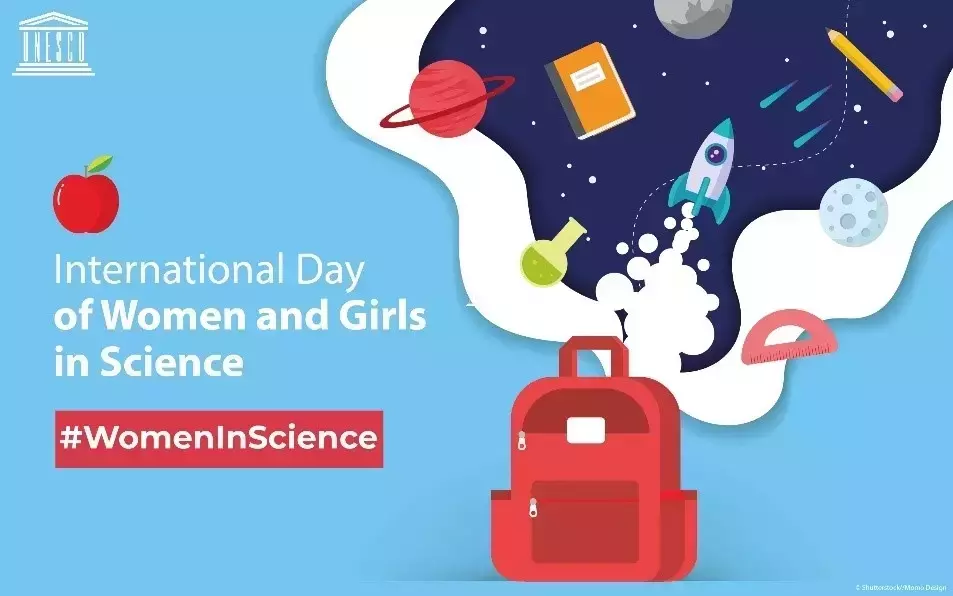Women (and men) around the world have a special reason to celebrate in mid-February, and I’m not talking about Valentine’s Day.
Did you know that February 11, 2021 is International Day of Women and Girls in Science?
If not, you likely aren’t alone as this day of commemoration is still in its relative infancy, having been initiated by a United Nations resolution in December 2015. The goal of this annual event is to recognize the critical role women and girls play in science and technology; and promote the equal participation and access of women and girls to science, technology, engineering, and mathematics (STEM) education, training, and research activities at all levels.

While progress has most certainly been made in increasing the number of women working in STEM fields in the past few decades, the reality is there is a long way to go as women are still disproportionately under-represented as practitioners and leaders in STEM when one considers the demographics of the global population.
STEM jobs span industries
In the U.S., STEM jobs span a number of industry sectors from manufacturing to healthcare to education, and the representation of women within these segments varies widely. It’s interesting to see that health-related job clusters are comprised primarily of women, as women tend to more frequently hold roles such as dental hygienist and speech pathologist. Then there are other job clusters such as computer and engineering jobs, which have relatively low female representation, as noted in the chart below.

STEM and Women in Manufacturing
The manufacturing industry features a variety of the STEM job clusters including life science, physical science, computer, and engineering roles, which means there are numerous options for women in the sector.
And yet, the manufacturing industry still has a significant opportunity to increase female representation in its workforce. In fact, according to the Thomas and WiM 2020 Women in Manufacturing Benchmark Study:
- Only 33% of manufacturing employees are women
- Just 26% of manufacturing leaders are women
Considering the diversity of subsectors within the manufacturing industry, it’s worth noting that the medical/healthcare segment actually has the highest representation of female employees at 54%, which is significantly above the industry average of 33%. This is interesting given the fact that women hold more health-related STEM jobs in other industries as well, as noted earlier.
COVID-19 pandemic emphasizes importance of [women in] STEM
Over the past year, it’s become all too clear how important continued advances in science and technology are to the health and wellbeing of humanity. From the development of treatments for fighting COVID-19 infections to the race in developing a viable COVID-19 vaccine, STEM has been a consistent thread uniting the global fight against this pandemic.
Another consistent thread in this fight has been the integral role of women, especially in the development of the COVID-19 vaccine. While there were many involved, two female scientists contributed tremendously to this effort and deserve special and continued recognition:
- Dr. Katalin Karikó – co-developed a method of utilizing synthetic mRNA to fight disease that involves changing the way the body produces virus-fighting material, which is now the basis of the COVID-19 vaccine
- Dr. Kizzmekia Corbett – one of the National Institutes of Health's leading scientists who partnered with biotech firm, Moderna, to develop its mRNA vaccine
“Science reflects the people who make it. The world needs science, and science needs women and girls.” (UN Women)
Given the tremendous scientific contributions of women being front and center this year, we have an even greater reason to celebrate, acknowledge and support the cause of International Day of Women and Girls in Science.
With many STEM career opportunities available, not to mention the fact the industry faces an ongoing skilled talent shortage, manufacturers should be leading this charge. In order to successfully build a talent pipeline of the future in manufacturing, it’s critical that strategies for attracting, recruiting, and developing women are prioritized by organizations around the world.
Check out more resources on how UKG can provide WFM and HCM solutions for your manufacturing workforce.



